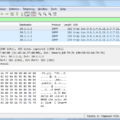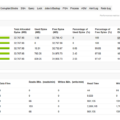Threat intelligence feeds provide organizations with much-needed insight and context into the ever-evolving cybersecurity landscape. By leveraging a variety of sources, such as open-source information sharing and internal security tools, organizations can gain unprecedented visibility into the threats that target their systems and networks.
Using threat intelligence feeds, organizations can better understand the types of threats they face on a daily basis and take steps to protect themselves. By analyzing threat indicators, such as malicious IP addresses or domains, companies can identify malicious actors and take action to block them from accessing their systems. Additionally, organizations can use threat intelligence feeds to look for patterns or trends in attacks over time, allowing them to quickly identify new threats before they have a chance to do any real damage.
Furthermore, threat intelligence feeds can be used to enrich incident data and provide more context for investigations. For instance, using a threat intelligence feed from Microsoft can help analysts determine whether an attack originated from a known malicious actor or if it was simply part of a larger campaign targeting multiple companies at once. Similarly, IBM’s threat intelligence system provides additional context around attacks targeting its cloud-based services. By utilizing these types of feed sources during investigations, analysts can make better decisions about how best to respond and prevent future incidents from occurring.
Overall, threat intelligence feeds are essential for modern organizations looking to stay ahead of cyber threats. They allow organizations to gain greater visibility into their security posture by providing valuable insight into the types of threats they face on a daily basis. Additionally, they serve as useful sources of enriched incident data that can help analysts make informed decisions when responding to incidents or investigating potential cyberattacks.

Understanding Microsoft Threat Intelligence Feed
Microsoft Threat Intelligence Feed is a comprehensive set of threat indicators designed to help organizations better protect themselves against cyber threats. The feed provides information on malicious IP addresses, domains, file hashes, and URLs. This data is gathered from a variety of sources, including trusted third-party intelligence sources and Microsoft’s own telemetry data. In addition to providing threat indicators, the feed also provides additional context about the threat such as its origin, category, severity, and related incidents. This extra context can help security teams quickly identify and respond to potential threats in their environment. Microsoft Threat Intelligence Feed can be used in conjunction with Logic App playbooks to automate incident response processes and help organizations quickly identify and mitigate threats.
Selecting the Best Intelligence Threat Feed
The best intelligence threat feed depends on the specific needs of your organization. Heimdal Security offers a security-made-easy threat intelligence solution that provides real-time monitoring, detection, and response to threats across multiple channels. Cyble also offers a real-time threat monitoring and response system that provides detailed information on threats, as well as offers proactive threat protection. Hudsonrock is another robust cyber threat intelligence feed that provides comprehensive infrastructure and end-user security intelligence. Ultimately, the best option for you will depend on the size of your organization and the specific type of data you need to protect.
Example of a Threat Intelligence Feed
Threat intelligence feeds are collections of data that provide information about current and emerging security threats. These feeds, which can be in the form of real-time data streams or archived reports, are created by organizations like Microsoft, Facebook, and IBM to help inform their customers and other users of potential issues. The feeds typically include details on new vulnerabilities, malware, malicious actors, and other cyber security threats. Additionally, threat intelligence can also provide information on how to address specific issues and mitigate risks. For example, a Microsoft feed may include details on the latest patch for a vulnerability in its products or services; a Facebook feed might include reports on the latest online scams; and an IBM feed might provide details on newly discovered malware threats. By regularly monitoring these feeds, individuals and organizations can stay informed about the latest developments in cyber security.
Sources of Threat Intelligence Feeds
Threat intelligence feeds can come from a variety of sources, both external and internal. External sources include open-source information-sharing platforms such as OSINT (Open Source Intelligence), social media feeds, and cyber threat intelligence reports from security vendors. Additionally, threat information-sharing groups such as ISACs (Information Sharing and Analysis Centers) and CTI (Cyber Threat Intelligence) organizations can provide insights about new threats.
Internal sources for threat intelligence include an organization’s existing security infrastructure such as its SIEM (Security Information and Event Management) or log management tools. This can provide valuable data about suspicious activities inside the organization’s network which can be used to identify potential threats. Additionally, the use of analytics tools such as data mining or machine learning techniques can help to quickly identify malicious behavior on the network.
Exploring the Best Free Threat Feeds
The best free threat feed is the Emerging Threats Feed. This open-source feed is maintained by a network of security professionals and provides up-to-date threat intelligence data on malicious IP addresses, domains, URLs, and more. The data is collected from research done by the community and includes information on Trojans, worms, viruses, botnets, and other malware threats. It also includes indicators of compromise such as IPs used in malicious campaigns. The feed is updated regularly and can be accessed through an API or direct download. Additionally, there are many third-party services that offer access to the Emerging Threats feed for free.
The Difference Between Threat Feed and Threat Intelligence
Threat Feeds are essentially a collection of records that contain details about potential threats. These records may include information on malicious actors, malware, vulnerabilities, and tools used to exploit those weaknesses. The data within a threat feed is generally collected from open-source sources such as websites, blogs, forums, and social media. Threat Feeds are a great way to monitor the current environment for potential risks and threats.
Threat Intelligence, on the other hand, is the result of analyzing and enriching the data from Threat Feeds. This includes gathering data from multiple sources to build an understanding of the landscape of malicious activity. Security analysts will often take this information and create actionable intelligence which can be used to improve security posture and protect against threats by adding additional layers of defense or helping to detect malicious activity before it can cause harm. Additionally, threat intelligence can help organizations anticipate future attacks by finding patterns in previously observed attack activities.
Conclusion
Threat intelligence feeds are an essential part of any organization’s cyber security strategy, providing a real-time overview of the threats they face. By leveraging a wide range of external and internal sources, threat intelligence can provide a comprehensive understanding of the cyber threats facing an organization. This information can be used to detect and prevent malicious activity, as well as to respond quickly to incidents in order to minimize their impact. In addition, threat intelligence feeds can also be used to enrich the information in your incidents, providing more context for investigations. With the right threat intelligence solution, organizations can protect themselves from cyber-attacks and reduce the risk associated with them.








